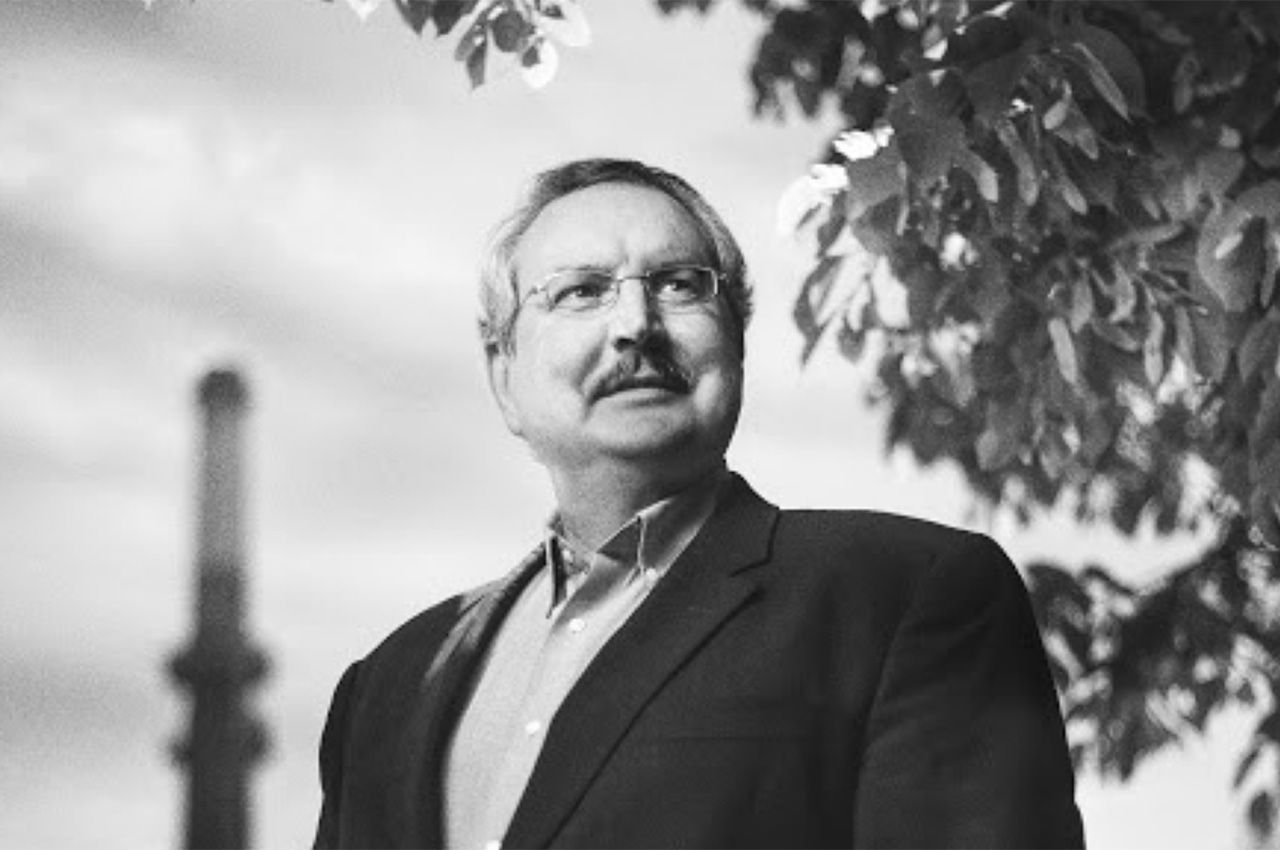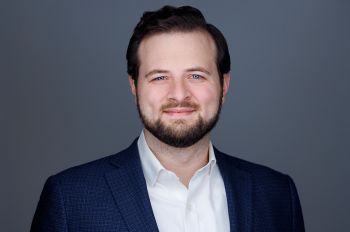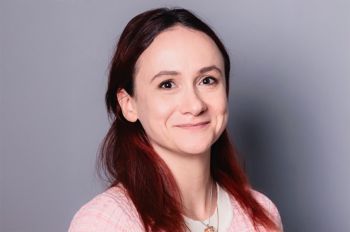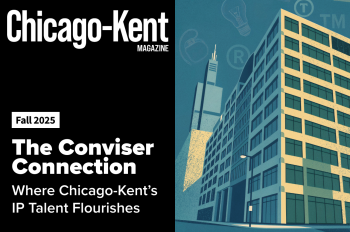How Chicago-Kent's Environmental and Energy Law Clinic Became a South Side Legacy

This story appears in the Chicago-Kent College of Law's Spring 2021 Alumni Magazine. To read the entire magazine online, follow this link.
Those who know Keith Harley call him cerebral, stoic. He shies from the spotlight. During meetings and depositions, he maintains a poker face as he patiently inscribes notes.
“I’ve only seen him laugh, like, three times. I’ve only seen him get upset three times,” says Little Village Environmental Justice Organization Executive Director Kim Wasserman, who has known Harley for 22 years. “I feel like the calmer he is, the longer he waits to start talking, the more you’re going to get your [expletive] handed to you.”
Harley is both the calm and the storm.
Even before he started the Environmental and Energy Law Clinic at Chicago-Kent College of Law in 1998, he went from tiny actions to giant motions, bringing change that isn’t so much systemic as Earth saving. The clinic now commands an unparalleled reputation for helping community groups—particularly those in Chicago’s poorer neighborhoods—often bringing federal cavalry to bear against the infractions of big polluters. Locally, it was the rudimental tip of the spear in the environmental justice movement.
“Keith is the reason we have an environmental justice officer in the Illinois Environmental Protection Agency,” says Wasserman. “He just has a knack for finding spaces where we have rights.” The clinic Harley founded decades ago has since helped hundreds of small community groups, succeeding against Goliathan opponents from coal fire conglomerates to City Hall. It has spurred law and policy changes. And it has taught hundreds of Chicago-Kent students the tenets of environmental stewardship.
But like most big things, it started out small.
***
When Harley graduated from Chicago-Kent in 1988, he started working for a small nonprofit on East 91st Street in South Chicago, a neighborhood dominated by both poverty and industry.
“I do not come from a family of environmentalists, and I do not come from a family of lawyers,” Harley says.
Instead, he grew up in a steel family, in northwest Indiana. His father worked for Bethlehem Steel from the time he emigrated from the United Kingdom in the 1950s to the time he retired 35 years later.
So Harley understands how an industry can be the lifeblood of a community. But also how that relationship can have consequences: the mingling of prosperity and risk.
“The opportunity to go work in a clinic in Southeast Chicago, where steel was dominant for decades, felt to me like going home,” Harley says.
When he began at Chicago Legal Clinic, he started by handing out manuals—hundreds and hundreds of manuals that he and fellow law student Gary Prichard wrote, about how regular people could get involved in environmental decision making. They gave them to every community group they could find.
“That was what we used to prime the pump,” Harley says. And while originally he took every case that came through Chicago Legal Clinic’s door, there was a clear need for someone to tackle environmental issues specifically.
“Every group had something on their agenda, like, what are the risks of this unremediated coke battery site? The spigot turned on and just started flowing.”
Then came the clinic’s seminal case.
Harley got a call from a group of residents of Altgeld Gardens, a city-owned public housing complex several miles from the Indiana border. They’d just received notices that their children had elevated lead levels, and didn’t know what to do. The Chicago Housing Authority wasn’t doing much.
After interviewing tenant after tenant, Harley realized the lack of response was not just irresponsible, but systemic. There was lead paint everywhere.
“The more I began working on these cases I realized it was not a case with those units at Altgeld, but with Chicago Housing Authority stock in general,” Harley says.
So he thought bigger. Rather than just file for relief for Altgeld, he started inquiring about CHA’s entire stock of 28,000 housing units citywide. Negotiations led to a comprehensive settlement with CHA for system-wide reforms, which the federal government funded.
“That’s his niche: getting the feds to step in and say the city’s not doing enough,” Wasserman says.
Within five years, the city housing authority demolished a number of its housing communities and replaced them with new alternatives, and removed all lead paint from the remaining units. The successful legal tactic soon became Harley’s modus operandi.
“Over and over again, that was the kind of thing we were dealing with in these cases. It began locally, but when we started pulling on the thread we saw they were representative of broader problems,” Harley says. So in addition to tackling the local problem, they looked at broader problems.
But he never left the local groups behind.
Wasserman speaks disparagingly of national “big green” organizations that told her group they’d negotiate on its behalf, then struck deals that left it hanging.
“We have run the gamut of getting screwed, and never once have we run into that with Keith,” Wasserman says. “Keith is someone who very much upholds what it means to be an ethical lawyer.”
Harley soon hit the fundraising trail, talking about the need for a clinic focused solely on environmental issues. The first big break came from the MacArthur Foundation, others followed, and the Environmental and Energy Law Clinic started in 1998.
Tapping his Chicago-Kent contacts, Harley forged a long-term relationship with the law college, gaining the volunteer efforts of roughly a dozen students every semester. It wasn’t the typical way Chicago-Kent handled its clinics, which are mostly in-house. But the clinic commanded some big selling points: a ready client base and neighborhood offices that placed students on the front lines.
“We want the students to have a case, a client, and a place,” Harley says.
And they did. One case, in fact, absorbed the efforts of entire generations of Chicago-Kent clinical students.
***
Back around 2000, some residents of the modest Chicago exurb of Lockport, Illinois, noticed dark smoke drifting from the stacks of a nearby coal-fired power plant. A tiny community group started meeting around a dining room table. Members had talked to the clinic before, and asked them to look into what was going on, what could be done.
Years later, the community group, Citizens Against Ruining the Environment, was backed in a lawsuit by the United States government and the State of Illinois. Harvard University studies pointed out the smoke’s detrimental effects. A joint complaint between the group and the federal and state government alleged the company had violated emissions standards and breached their permit. Within seven years, the company—which had a fleet of plants on top of the one the group noticed—entered into a federal consent agreement.
“Here you have this case where an all-volunteer organization that meets around a dining room table at a person’s home in Lockport, Illinois, is equal as plaintiffs to the United States and the State of Illinois,” says Harley. “They bring that community-based perspective into the case. And that would not have happened if not for the Environmental Energy Law Clinic.”
Currently, the clinic has about 50 cases.
“Keith and the clinic are environmental institutions at this point,” says Cassandra Hadwen, the clinic’s current senior Baum fellow. She has been involved with the clinic since 2018, when she was a law student at Chicago-Kent.
If anything, the experience has brought Hadwen perspective. Not just about regulations and laws, but also the kind of insight one gets when conducting the trench work of environmental justice. Certain incidents seem to be more prevalent in poorer communities, she now notices.
One example: last Easter, Hadwen attended Little Village community meetings after a century-old smokestack at the defunct Crawford Coal Plant imploded during a demolition, blanketing the neighborhood in dust.
There were plenty of residents “who knew an environmental wrong happened, but didn’t know what the next steps were and where to go,” Hadwen says. “We were able to provide that outlet, bridge the gap between regular people and the legal world that can be very daunting.”
Chicago Legal Clinic, which houses Harley’s operation, has since moved downtown and changed its name to the Greater Chicago Legal Clinic. There’s a reason: the need for it has grown into the suburbs, as well.
“The communities that look like south Chicago did back in the day are like Harvey or Ford Heights. These are the communities with profound needs right now,” Harley said.
And wherever the front lines lie, Harley says, that’s where Chicago- Kent’s Environmental and Energy Law Clinic will be.



